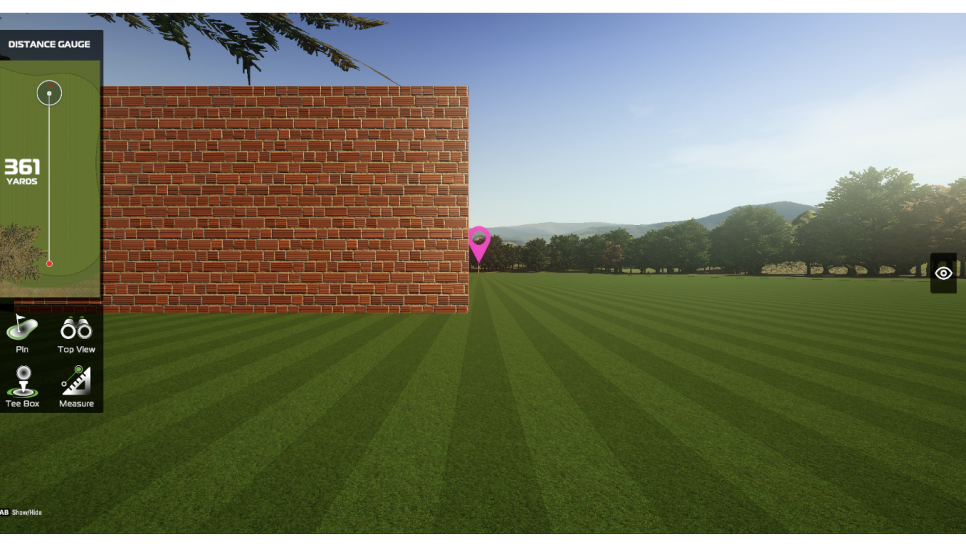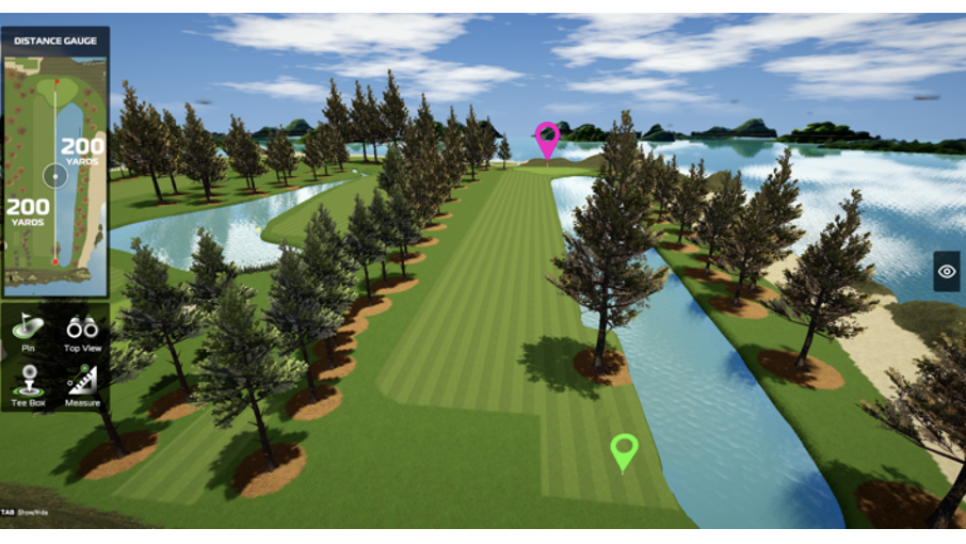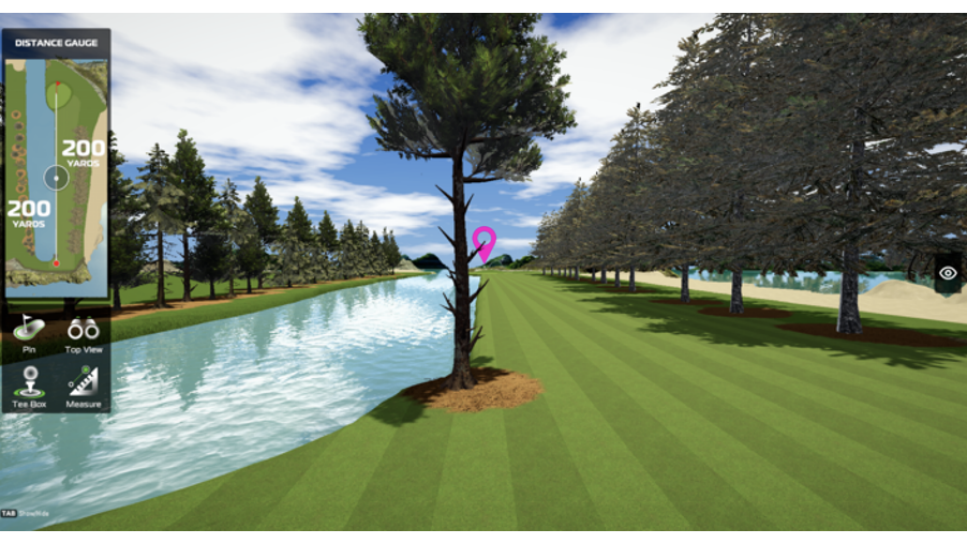Instruction
Can a virtual brick wall cure your slice? Golftec brings new technology to old-school learning

Golftec's SkyTrak simulator uses a virtual brick wall to turn a pull slice into a push draw.
Sometimes the best instruction is so simple it could teach a reasonably intelligent dog to execute a high draw (see the molded grip), and sometimes, especially in the modern era of deep-dive analytics and motion-capture animation, you need a Ph.D. in biomechanics and physiology just to begin to formulate words to describe what you think you’re seeing.
Then, thankfully, this beautifully enlightening middle ground takes all of modern A.I. transformational gobbledygook and makes it as stunningly and unyieldingly profound as a solid brick wall—or in this case a virtual brick wall.

This SkyTrak screen is designed to help golfers pull fade without overslicing.
I got this sense of the possible meeting of old and new tech at the recent opening of Golftec’s first Manhattan store and its 262nd worldwide. Golftec has spent the past two decades giving more lessons than any golf entity on earth (18 million or so) and measuring, cataloging and dissecting all those swings and their similarities and differences to find commonalities that can lead to almost immediate corrective action. According to the company, its students improve by an average of seven shots. Golftec's most recent advancement is OptiMotion, which takes its video and sensor-driven setup of the past and converts it to one without sensors and the use of digital wireframe figures that show how one golfer’s angles and positions fall short of optimal. That was OptiMotion at work during the Masters showing everyone’s moves—from 1986 Jack Nicklaus to 2024 Scottie Scheffler—and illustrating everything from weight transfer to shoulder turn.
As cool as OptiMotion is, what I saw at the Manhattan Golftec store is slicker, simpler and potentially more effective. Through its partnership with the recently acquired SkyTrak home launch-monitor brand, Golftec is using SkyTrak’s ability to design holes and screens to help focus a player’s learning and training. Trying to learn what it takes to hit shots lower? A specially made SkyTrak screen projects a ceiling of trees on the range that requires iron shots be launched at less than 15 degrees. Trying to figure out how to hit that elite push draw or power fade? A row of impenetrable video screen trees in the middle of your target fairway means shots have to be worked just the right amount with water lurking if you overcook it. Trying to end that slice once and for all? A virtual brick wall lines the right side.
The SkyTrak simulator screens also display launch-monitor numbers that are color-coded to line up with the individual student’s swing. Numbers that appear shaded green are good, and yellow- and red-shaded launch parameters require more work. Presumably as the student progresses, converting a red number to a yellow number reflects progress toward optimal performance. Again, it's a virtual incentive to improve.

This screen helps ingrain the push draw without overdrawing.
The idea is that visual clues spur change, and maybe more quickly and completely than any computerized output of weight shift percentages, plane lines or other visual representation for why your swing is worse than Nelly Korda’s. It’s both new and old technology and reminds me of the legendary Winged Foot Golf Club pro Claude Harmon Sr.’s trick of placing a club box or other small object just outside the ball to prevent players from cutting across the ball.
“We’ve always been trying to teach golfers how to understand their swings,” said Golftec COO Jeremy Beck. “We’ve always had tricks or drills to ingrain certain ideas when we were working and teaching on an outdoor range. We now have these new virtual mechanisms that we can try indoors. It’s pretty remarkable to see how quickly golfers intuitively adjust to the obstacles in front of them.”

The elite player is challenged here to "thread the needle with a slight draw."
Learning golf indoors may have its shortcomings (bunker play, for instance), but optimizing the capabilities of your swing seems more efficient when the numbers are in front of you. Even more intriguing is how the power of golf simulator technology injects your mind with the energy to find the swing within you. Game-ified simulations power learning in all sorts of environments, most notably in flight simulators. Golf makes almost more common sense.

Students who add too much loft at impact can learn to flight the ball lower when confronted by a canopy of tree limbs.
Currently, the specially made SkyTrak screens populate only Golftec learning centers, but they may exist as an option for in-home SkyTrak users in the not-too-distant future. A future that seems all about learning faster.